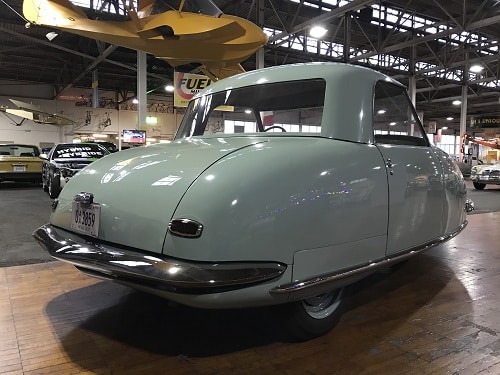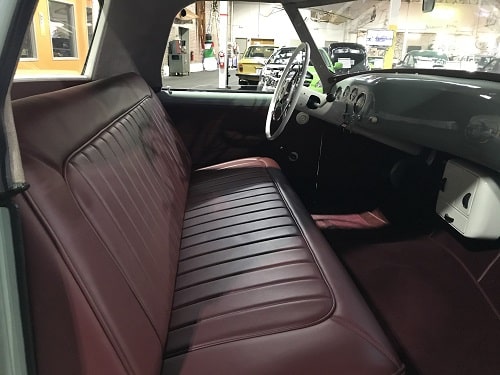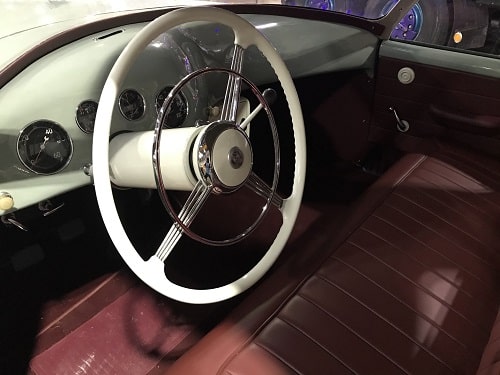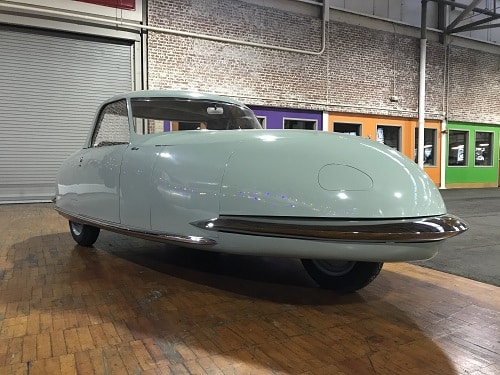
Davis Divan “Baby”- 1947
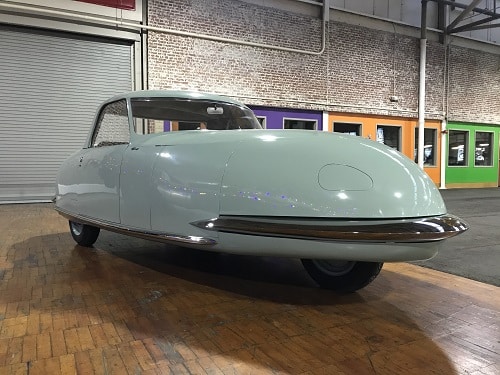
Charismatic used cars salesman Glen Gordon “Gary” Davis moved from Indiana to Southern California filled with optimism and dreams. On the streets of Los Angeles, he saw an aerospace-styled three-wheeled vehicle called the “Californian” and was struck by its uniqueness. The vehicle was owned by a wealthy engineer, Joel Thorne, and built by Frank Kurtis, Thorne’s shop foreman at the time—who would be the future founder of the Kurtis-Kraft racing that dominated the Indy 500 in the 1950s. Davis befriended Thorne and acquired the vehicle in 1945. His intention, however, was to reverse-engineer, and market a futuristic automobile vision of his own. He wanted to “style it possibly better than averaged…and utilize its inherent advantages to obtain high maneuverability, greater stability, and a low production cost.”
With Davis’ skills in self-promotion, he hired a group of engineers to build a prototype without pay by promising them they would receive double the going wage when the car reached production. Thus in 1946, the Davis Motorcar Co. was established and the prototype built was known as “Baby”. The Davis you see here is this very car! With a jet-age aluminum body and tubular space frame, it was like nothing else on the road. Baby had three wheels with disc brakes, a top speed above 100 mph, and a touted 50 mpg. It’s center of gravity, only 18” from the ground, was known to demonstrate it’s 13-ft turning radius at 50 mph with Davis at the wheel, without turning over!
To illustrate Davis’s master of deceit, in November 1947 Baby was displayed at the Ambassador Hotel in Los Angeles, re-painted and shipped to a high-end Philadelphia department store for the Christmas season. After, Baby was repainted once again and whisked back to California for the 1948, Rose Parade on New Year’s Day in Pasadena. In other words, it was made to look like three different Davis vehicles, when it was just the one.
Davis’ cars quickly made the news, donning the covers of magazines, newspapers, and were seen on television. With such promise, franchise agreements had been signed but in early 1949, the LA County DA began an investigation into investor complaints. Gary Davis also faced fraud charges by his 17 employees who had still not been paid. The Davis factory was shuttered, assets were liquidated. Davis eventually served two years in minimum-security prison on 28 charges of fraud and grand theft.
Specifications:
Manufacturer: Davis Motorcar Co.
Country of Origin: USA
Drivetrain Configuration: Front-engine, rear-wheel drive
Engine: Hercules four-cylinder, 47 hp
Transmission: Manual 3-speed gearbox
Top speed: 100 mph (Claimed)
Years Produced: 1947 – 1948
Number Produced: 13
Cost: Proposed $995.00

